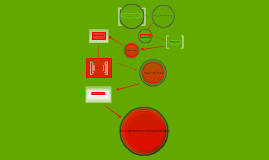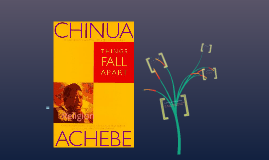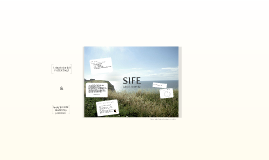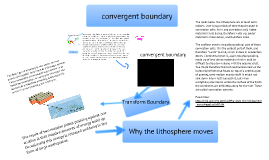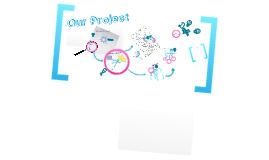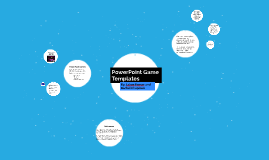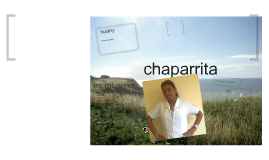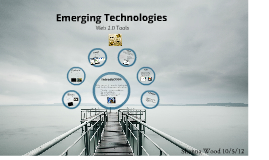new feature : templates
Transcript: Seafloor spreading Sea-floor spreading is the process in which the ocean floor is extended when two plates move apart. As the plates move apart, the rocks break and form a crack between the plates. Earthquakes occur along the plate boundary. Magma rises through the cracks and seeps out onto the ocean floor like a long, thin, undersea volcano. As magma meets the water, it cools and solidifies, adding to the edges of the sideways-moving plates. As magma piles up along the crack, a long chain of mountains forms gradually on the ocean floor. This chain is called an oceanic ridge. The boundaries where the plates move apart are 'constructive' because new crust is being formed and added to the ocean floor. The ocean floor gradually extends and thus the size of these plates increases. As these plates get bigger, others become smaller as they melt back into the Earth in the process called subduction. The new rock at the edge has no sediments like the sand or mud, since it is formed only recently. Farther away from the ridge, sand and mud gradually settle on it, in an ever-thickening blanket. The oldest rocks may have 14,000 feet of sand and other sediments resting on top of it. An example of an oceanic ridge is the Mid-Atlantic Ridge. It is one part of a system of mid-oceanic ridges that stretches for 50,000 miles through the world's oceans. The underwater mountains of the ridge may not be more than two miles higher than the surrounding sea floor. Abundant evidence supports the major contentions of the seafloor-spreading theory. First, samples of the deep ocean floor show that basaltic oceanic crust and overlying sediment become progressively younger as the mid-ocean ridge is approached, and the sediment cover is thinner near the ridge. Second, the rock making up the ocean floor is considerably younger than the continents, with no samples found over 200 million years old, as contrasted with maximum ages of over 3 billion years for the continental rocks. This confirms that older ocean crust has been reabsorbed in ocean trench systems. By the mid-1960s studies of the earth's magnetic field showed a history of periodic reversals in polarity (see paleomagnetism). A timescale for “normal” and “reversed” polarity was established, showing 171 magnetic “flip-flops” in the past 76 million years. Magnetic surveys conducted near the mid-ocean ridge showed elongated patterns of normal and reversed polarity of the ocean floor in bands paralleling the rift and symmetrically distributed as mirror images on either side of it. The magnetic history of the earth is thus recorded in the spreading ocean floors as in a very slow magnetic tape recording, forming a continuous record of the movement of the ocean floors. Other supportive evidence has emerged from study of the fracture zones that offset the sections of the ridge. Sections in this article: Read more: seafloor spreading: Supporting Evidence for Seafloor Spreading — Infoplease.com http://www.infoplease.com/ce6/sci/A0860994.html#ixzz1ecWGFkw3 Plate tectonics (from the Late Latin tectonicus, from the Greek: τεκτονικός "pertaining to building")[1] is a scientific theory that describes the large scale motions of Earth's lithosphere. The theory builds on the concepts of continental drift, developed during the first decades of the 20th century, and accepted by the majority of the geoscientific community when the concepts of seafloor spreading were developed in the late 1950s and early 1960s. The lithosphere is broken up into tectonic plates. In the case of the Earth, there are currently seven or eight major (depending on how they are defined) and many minor plates. The lithospheric plates ride on the asthenosphere. These plates move in relation to one another at one of three types of plate boundaries: convergent, or collisional boundaries; divergent boundaries, also called spreading centers; and conservative transform boundaries. Earthquakes, volcanic activity, mountain-building, and oceanic trench formation occur along these plate boundaries. The lateral relative movement of the plates typically varies from 0–100 mm annually.[2] The tectonic plates are composed of two types of lithosphere: thicker continental and thin oceanic. The upper part is called the crust, again of two types (continental and oceanic). This means that a plate can be of one type, or of both types. One of the main points the theory proposes is that the amount of surface of the (continental and oceanic) plates that disappears in the mantle along the convergent boundaries by subduction is more or less in equilibrium with the new (oceanic) crust that is formed along the divergent margins by seafloor spreading. This is also referred to as the conveyor belt principle. In this way, the total surface of the globe remains the same. This is in contrast with earlier theories advocated before the Plate Tectonics paradigm, as it is sometimes called, became the main scientific model, theories that proposed gradual shrinking






